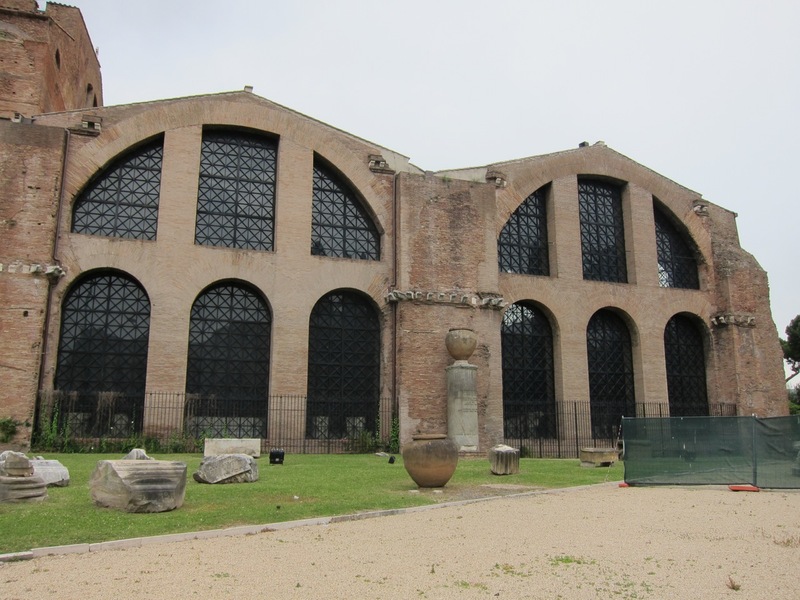Athletics and Swimming
Visitors to the baths began their experience outside in the palaestrae, where they participated in games and gymnastics. The goal of these athletics for most visitors was not to exert the body to the fullest, as in the Greek tradition – the ideal level of exertion was enough to create no more than a light sweat. Technically, the first stop within the Baths complex would be to the apodyterium (changing room), where Romans would change from street clothes into light athletic wear, sometimes assisted by accompanying servants.1
Outdoor athletics at baths could create raucous noise. Seneca complained at length in a letter about the cacophony of sounds that reached his lodgings from nearby baths (not the Baths of Diocletian, but presumably Roman baths with similar noises):
So, picture yourself the assortment of sounds, which are strong enough to make me hate my very powers of hearing! When your strenuous gentleman, for example, is exercising himself by flourishing leaden weights; when he is working hard, or else pretends to be working hard, I can hear him grunt... Then perhaps, a professional comes along, shouting out the score [of a ball game]... Add to this... the racket of a man who always likes his own voice in the bathroom, or the enthusisast who plunges into the swimming pool with unconscionable noise and splashing.2
After exercising, visitors would transition into the large swimming pool in the natatio (sometimes with unconscionable noise and splashing, by Seneca's account). As with exercise in the palaestrae, the goal of swimming was not extreme exertion, but healthy bodily movement and a chance to socialize.
_____
1. Fikret K. Yegül, Bathing in the Roman World (Cambridge: Cambridge University Press, 2010), 12.
2. Yegül, 20-21.
